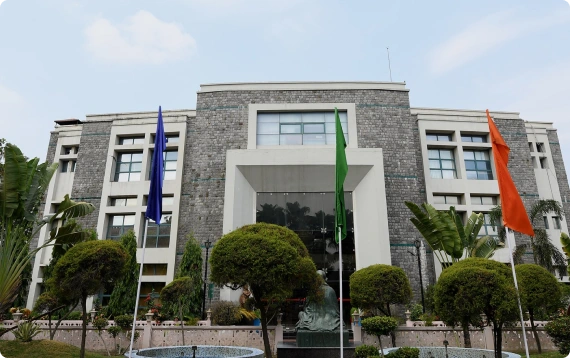Microservices architecture is the trendiest and most modern approach to software development. Microservices provides software with small independently deployable services with specific responsibilities. These services are well connected in terms of communication with functional application programming interfaces.
It provides valuable and practical results on the specific parameter without disturbing the other factors, which are not involved. The system groups those parameters that alter for similar reasons and separates those that do not. A full stack development course deals with the nuances of microservices architecture.
Key Benefits of Microservices Architecture
The main benefits of the microservices architecture are as follows -
Flexibility
Flexibility is the biggest advantage of microservices architecture. Earlier the system was monolithic, wherein a rise in demand of a certain process would mean that the entire architecture had to be scaled. In such cases, the results would be inaccurate thus limiting the possibility of experimentation and new implementations.
Elastic and scalable capabilities
Microservices enable the elasticity and scalability capabilities independently for processes. Other processes remain undisturbed and untouched. Only the spike in demand in a specific process is addressed and resolved. The cost of a feature may be accurately measured, and infrastructure needs may be correctly assessed.
Modular application
Another benefit of microservices is a modular application. Modules are loosely tied but independent functional units that may come together in different combinations to form different applications. Each module has communication capabilities with the others. Complete modules can be used for known applications saving additional efforts by developers.
Modularisation helps in efficient sub-programming. Smaller programs are easier to write, design, understand and execute. Modularisation may be done by features and layers.
-
Technological freedom
Technological freedom is achieved with the help of microservices architecture. Developers have the liberty to choose the most appropriate tool/s for a specific problem.
- Deployment ability
Easy deployment ability with continuous integration and speedy delivery is another benefit. This offers business houses to go for innovative solutions by trial and error methods. The researcher may easily withdraw what is not working and may deploy those that have proved worthy.
-
Reusable codes
Codes are reusable because of the modular structures and hence save a lot of time for the developers.
-
System resilience
System resilience is the most desired point for a developer. In a monolithic architecture, the failure of a single component would essentially result in the collapse of the entire system. However, in this case, the function of the system may degrade but the system will never be dead.
-
Ease of debugging
A process can be debugged easily and faster with the help of microservices architecture.
Full Stack Development
All these advanced features like modularisation and scalability are used in applications of web development, both at the front-end i.e. user interface and at the back-end i.e. the web or server interface, which takes care of the business logic and application workflow. Full stack development consists of both front-end and back-end application software development.
At the user interface, front-end technologies like JavaScript (JS), HyperText Mark-up Language (HTML) and Cascading Style Sheets (CSS) are mostly used. Some of the libraries and frameworks used by front-end systems are Angular JS, ReactJS, Bootstrap, jQuery, SASS etc.
On the server side, back-end technologies use scripting languages like PHP, and general-purpose programming languages like C++, Java or Python. Another important application is that of Node.js, which is a cross-platform runtime environment for performing JavaScript code outside a browser.
The popular databases used are Oracle, MongoDB, Structured Query Language (SQL) etc. The most popular technology stacks used for software development are MEAN and MERN. However, Django stack, Ruby on Rails and LAMP stack are also used.
Job Role of a Full Stack Developer
A full stack developer should know about software development at the front end and the back end of the application. The responsibilities of a full stack developer are as follows -
- The candidate should be aware of the popular technology stacks and how to work with its different components. Knowledge of MEAN and MERN is a basic requirement.
- Choosing the right combination of technologies for a specific project and testing the same for both ends are the basic functions of a full-stack developer.
- The ability to write clean codes and follow best tool usage habits are also important characteristics of a full-stack developer.
- Knowledge of JavaScript is a must for a full stack developer since this is one of the very few languages that fit right for both ends.
- Additionally, the knowledge of HTML and CSS for the front end and Python, Java and NodeJS for the back end are the essential qualities expected of a full-stack developer.
Advantages of a full stack stack development
A software programmer becomes a complete developer upon attaining the full stack developer training programme. Several institutes impart full stack developer training programmes in India. Some of the institutes offer online courses while others offer offline courses.
The courses are mostly full-time courses since undivided attention is required for the desired candidates. Basic coding and programming knowledge would certainly be an added advantage to the learners. The advantages of a full stack development are as follows -
- Cost and time are both saved in the project due to faster debugging and enhanced productivity.
- Provides end-to-end ownership for the entire project.
- Easy knowledge exchange with team members.
- Better workload distribution amongst team members.
Conclusion
A full stack developer can engage in full-scale research activities and can analyse and interpret test results to develop better software systems. Full stack development is one of the most desired professional profiles by new-generation software enthusiasts and offers a promising career in India.
The Full Stack Developer Pro programme by Imarticus will enable the prospective candidate to have massive growth right at the beginning of their career. The mode of training is online and offline. The duration of this full stack development course is 6 months.
Visit the official website of Imarticus for more details on this course.











